Get in the Robot, Juro!
13 Sentinels: Aegis Rim does the impossible: explore a multitude of perspectives without losing its storytelling thrill
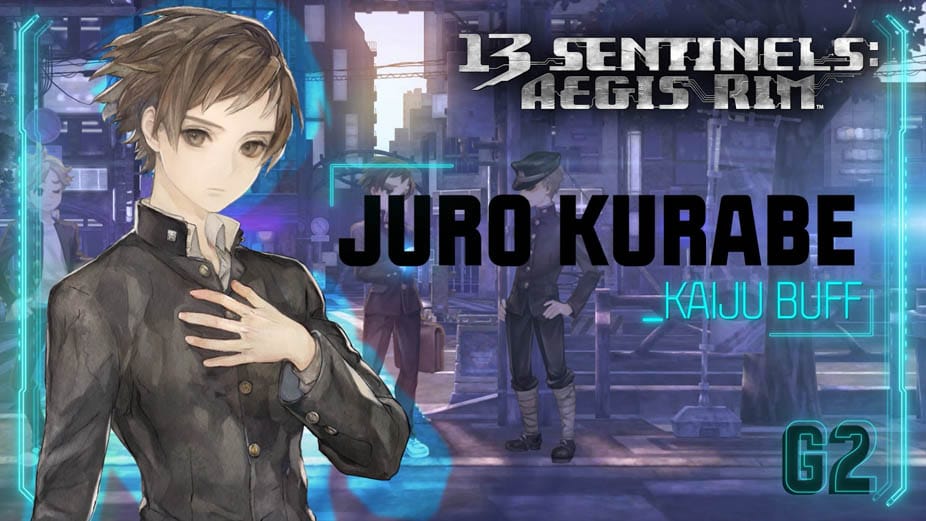
The story begins with the menu screen, the sound of something powering up as the camera slides across an image of thirteen students with their backs to the audience. Wind rustles through them and the ruins they’re perched on, the world cast in hazy sepia tones. There, looming in the distance, is a bulky robot that peers down at the group.
Just as PRESS ANY BUTTON fully fleshes itself out at the bottom of the screen, one student turns to look back at you. 13 Sentinels: Aegis Rim’s musical war cry Brat Overflow picks up, but it’s far off — not fully realized. You won’t hear the song in its full glory until the very end. Not until you’ve peeled back the gritty layers of gaslighting, nanomachines, and censorship through the game’s thirteen protagonists. Not until all collectively come together to act as an overflow error in computing: pushing a system beyond what it can handle.
With Japan as the battlefield, time running out, and metallic monsters – kaijus – ripping the city into pieces, the group takes its last stand. Armed with towering robots, Brat Overflow’s pseudo-language lyrics roar in, the universe itself unable to comprehend their collective defiance.
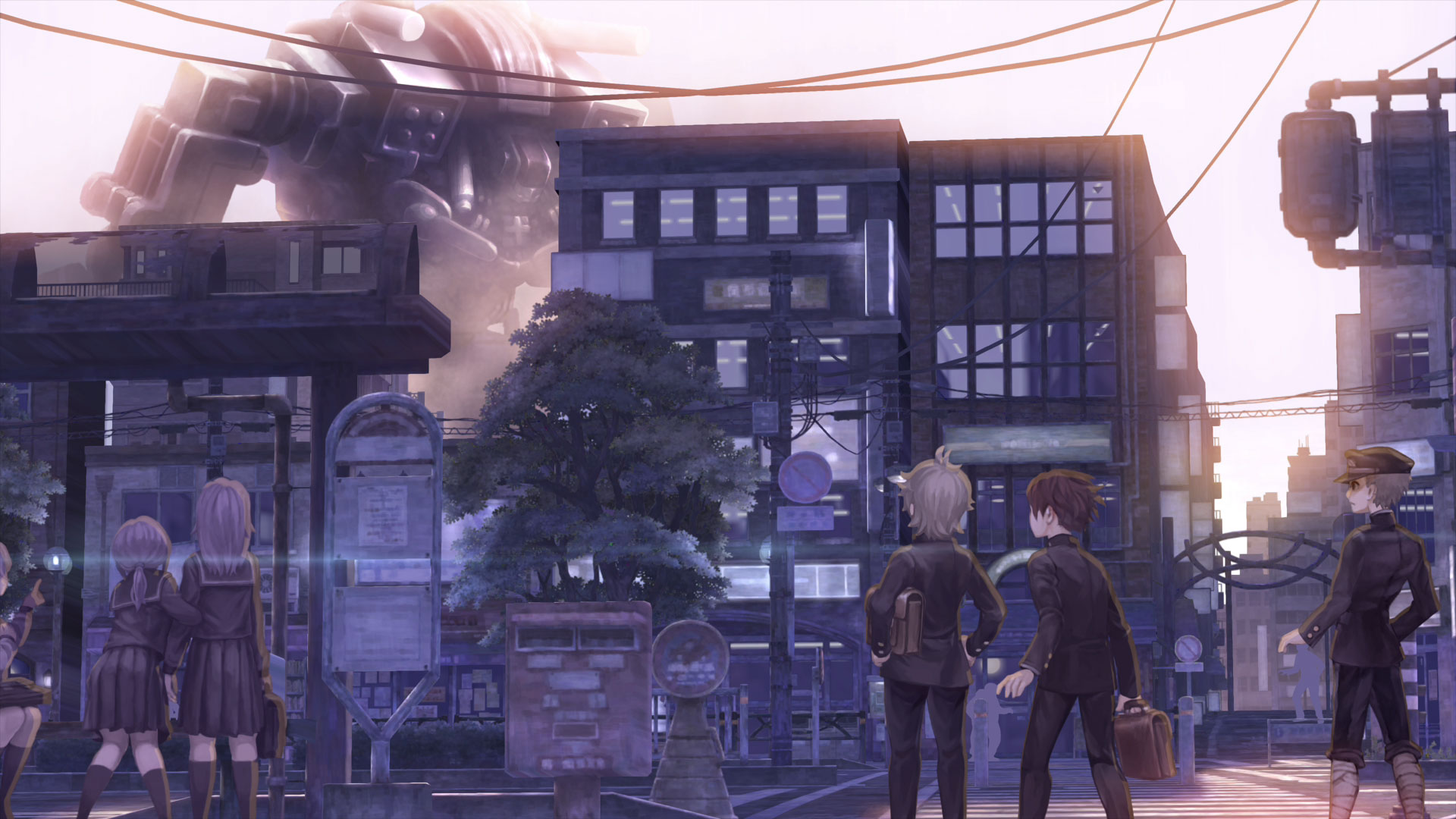
George Kamitani, the creative mind behind 13 Sentinels, and Vanillaware staff, shared with the world an ambitious science fiction game that explores multiple perspectives. With the game set mostly in 1980s Japan, the characters, script, and environment pay homage to multiple sci-fi works of fiction and the rise of popularity with mecha anime. While it initially was fun to go “oh, ‘The War of the Worlds’ reference!” and point out the winks and nods to other classics, it becomes clear later on that they act as telling clues to a mindscrewy, wonderful story.
In order to achieve what should be impossible — exploring thirteen protagonists in a universe that features robots (Sentinels), kaijus (dubbed Deimos in the game), androids, and 'time travel' — the game splits into three sections: Remembrance, Destruction, and Analysis.
Remembrance allows players to explore the different stories of the game’s protagonists, Destruction takes us to the burning battlefield, and Analysis is our growing collection of keywords and information. All three work in tandem, making a herculean concept possible and digestible. You need to interact with these three branches within the game, meeting certain conditions, in order to move forward. Some battles may require you to reach a certain point in a protagonist’s story. Some stories may require a certain amount of lore to be unlocked.
It may seem exhausting to peek through the eyes of so many protagonists, but it’s not. See, here is where Kamitani hooks players and prevents fatigue: the story is told out of order. You need to rely on the diverse cast and their experiences to put this elaborate puzzle together… or to weigh the validity of certain characters’ perceptions of an event.

A Story Told in Puzzle Pieces
The traditional story that is found in games is the linear tale — the start to the end of a journey. George Kamitani strove to create the most lifelike story through the minds of the characters without the help of a guide or any outside explanation. It’s non-linear; there are layers of internal monologues, different time periods, experiences, and interactions with other characters. This may be a challenging feat for some and requires an investment by the player.
I imagined the game as a puzzle where I’d been given no clue what the finished product should look like. There are times when I’m holding single pieces with no clear sign of where they should go or what they should connect to. Then I’ll come across that much-needed piece and, voila.
The protagonist who locks eyes with you on the menu screen — Juro Kurabe — acts as a significant puzzle piece to the story and all its protagonists despite initially appearing bland. The game shrouds his importance both to the audience and himself. To our eyes and his, he’s a student with the simple mission of going to school, watching low-budget sci-fi films when he can, and spending time with his friends. Yet horrifying dreams of an older version of himself murdering his friends and being scorned by society haunts him. He ‘dreams’ of summoning a massive Sentinel within the city, unintentionally causing destruction. When he sees news mirroring the same damage, he can’t make the connection (neither can we), even with another character — Keitaro Miura — pointing it out.
Every time it feels as if he is making progress in sorting this out or discovering the truth behind his own identity, someone is there to brush it aside and smoothly set him back to the start. With Juro’s story told through his perspective and in fragments, it’s hard for the players to catch the subtle hijinks and subversion taking place. It’s hard to resist the continual flow of gaslighting.

So when it’s finally revealed to Juro that those around him cannot see his supposed ‘best friend’, we begin to question and scrutinize the puzzle pieces we do have and those conveniently missing.
There is a reason why in different scenes other characters will look upon Juro quizzically or with quiet concern. All those lackadaisical moments of looking for Shu Amiguchi across campus so you could play video games at their place. The friendly banter and trading of VHS tapes featuring a recorded sci-fi flick. All of it was a sickly sweet farce, hidden with beautifully drawn backdrops and comforting background music. For something sits in Juro’s skull that is actively warping how he — no, we — perceive and remembers the world.
George Kamitani takes advantage of stories told through multiple perspectives to give players distinct impressions of key events across the game. It’s not until players have collected enough pieces of events and characters that we are reminded that not all protagonists are reliable narrators. Clues that characters may view as important may actually end up being red herrings that sucker both characters and ourselves into investing deeply.
Kaijus that are actually invading aliens? Sure! Time traveling to avoid an apocalyptic future? Sure!
All of it we so readily accept because the characters we’re moving through genuinely perceive it as such. Feelings, motives, and assumptions are constantly influencing the protagonists’ interpretations, which makes the storytelling moments where the truth finally reveals itself to be mind-blowing.
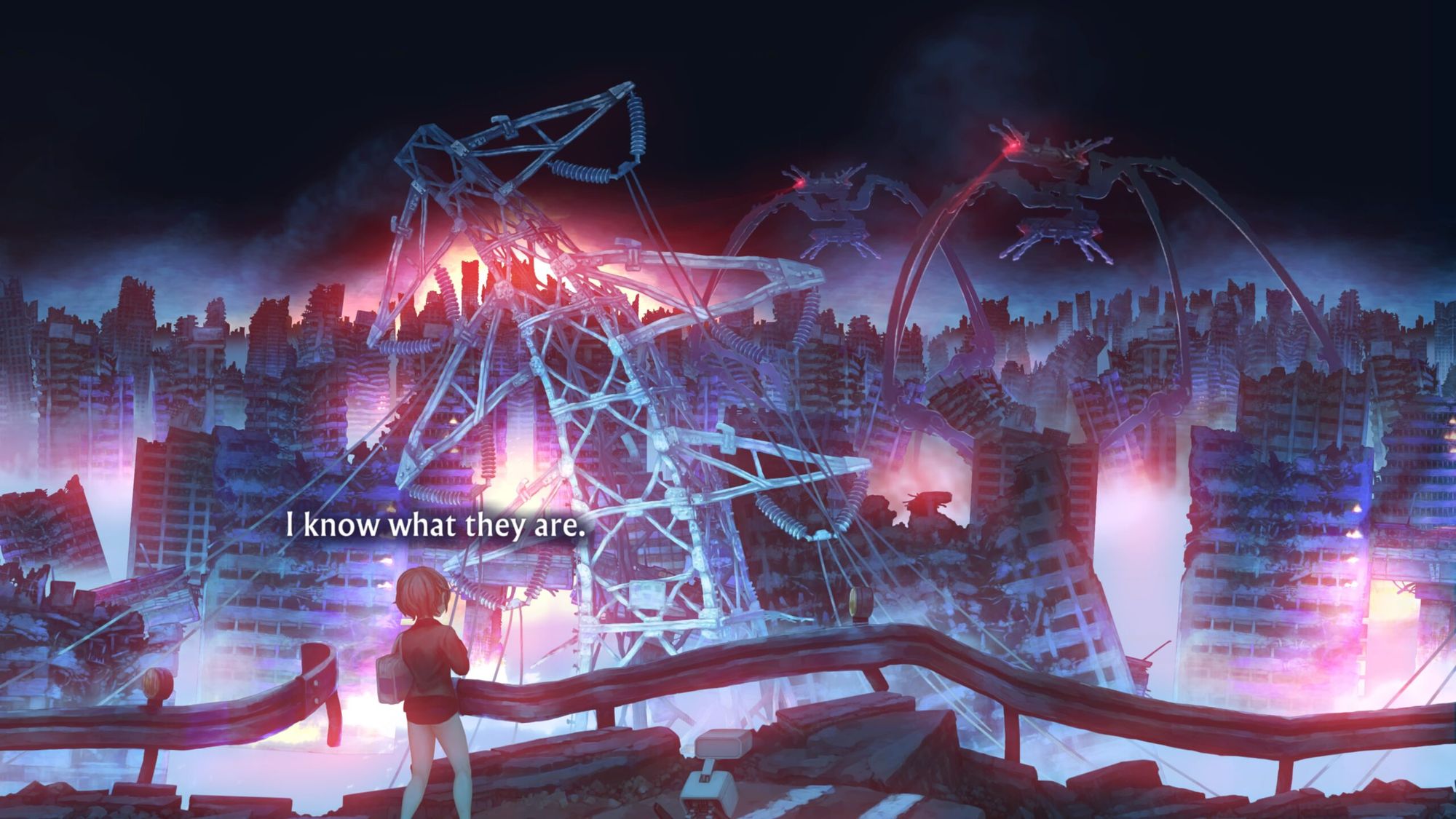
Sci-Fi References as a Storytelling Tool
The science fiction genre presents what-ifs. It’s escapism that tethers itself to reality, concerning itself with past, current, and future issues. It’s a medium that gives space for people to imagine different ways of being human. 13 Sentinels is a love song to the science fiction classics and will use them to explore the cyclical nature of history and a society veering close to its limits.
There are multiple settings within the game, but the one we see the most often in 13 Sentinels is Japan in the 1980s. What better time to pay homage to science fiction than in the 80s? This was a time in which Japan was continuing to experience an economic boom that emerged in the 1970s, the source of their growth coming from R&D-intensive and skill-intensive manufacturing industries. As technology continued to grow, new life was being breathed into the science fiction genre through films and the love for mecha anime was at an all-time high.
A Sprinkle of Realism
While 13 Sentinels happily ushers forth every science fiction trope out there, in no way does it diminish the storytelling itself. Instead, it had me reflecting on said classics, such as 2001: A Space Odyssey. What makes the film masterful from a storytelling lens is that its foundation lies in the scientific details on display throughout. The silence in space. The great care in navigating the pods. The ‘grip shoes’ and processed mush that is food in space. The rise of technological innovations to match mankind’s pioneering spirit. It’s convincing enough to pull viewers into the latter half of the film that falls into the surreal. George Kamitani applies the same storytelling technique throughout 13 Sentinels.
While massive, weaponized robots (Sentinels) may seem absolutely outlandish, they strangely make sense in the universe.
Each era looks upon it with a rationale that aligns with the events and pop culture of the time. In the era of 1945, World War II demanded innovation in science and technology. While we remember the usage of atomic bombs, what decimates Japanese soil, instead, are colossal metal monsters (later referred to as kaijus or Deimos). Characters like Keitaro Miura will instantly assume that American forces have developed these technological monstrosities. Other characters, like Takatoshi Hijiyami, believe Sentinels to be a secret weapon to combat Allied powers.
Other characters who derive from more futuristic time periods — 2025 and 2065 — look upon the kaijus as the result of humankind losing control of their own technology. It taps into, and discusses indirectly, issues experienced currently and, potentially, in the future regarding advanced technology and weapon-production companies.
When ‘time traveling’ and nanomachines that can alter one’s memories (innerlocitors, not ‘inner-lossiter’) are introduced, Kamitani uses non-playable characters, such as Tsukasa Okino, to act as a bridge between fantasy and reality. While Okino lacks the full picture himself, his grasp on Sentinel technology and the role of big tech giants such as Shikishima Industries help place players at ease. There are enough present-day scientific references and jargon used to embrace the surreal.
It also helps that Okino is paired with Takatoshi Hijiyama (voiced by Kaiji Tang, known for voicing Ichiban in Yakuza: Like a Dragon) who fumbles and bumbles his way toward understanding the new terminology for us.
If you're still drawing a blank on any new information, exploring characters' stories can lead to you unlocking 'Mystery Files'. Accessible within the Analysis section of the game, this provides players with brief explanations of the key terms introduced and summaries of experienced events. This proved extremely helpful in piecing together this incredible story and world.
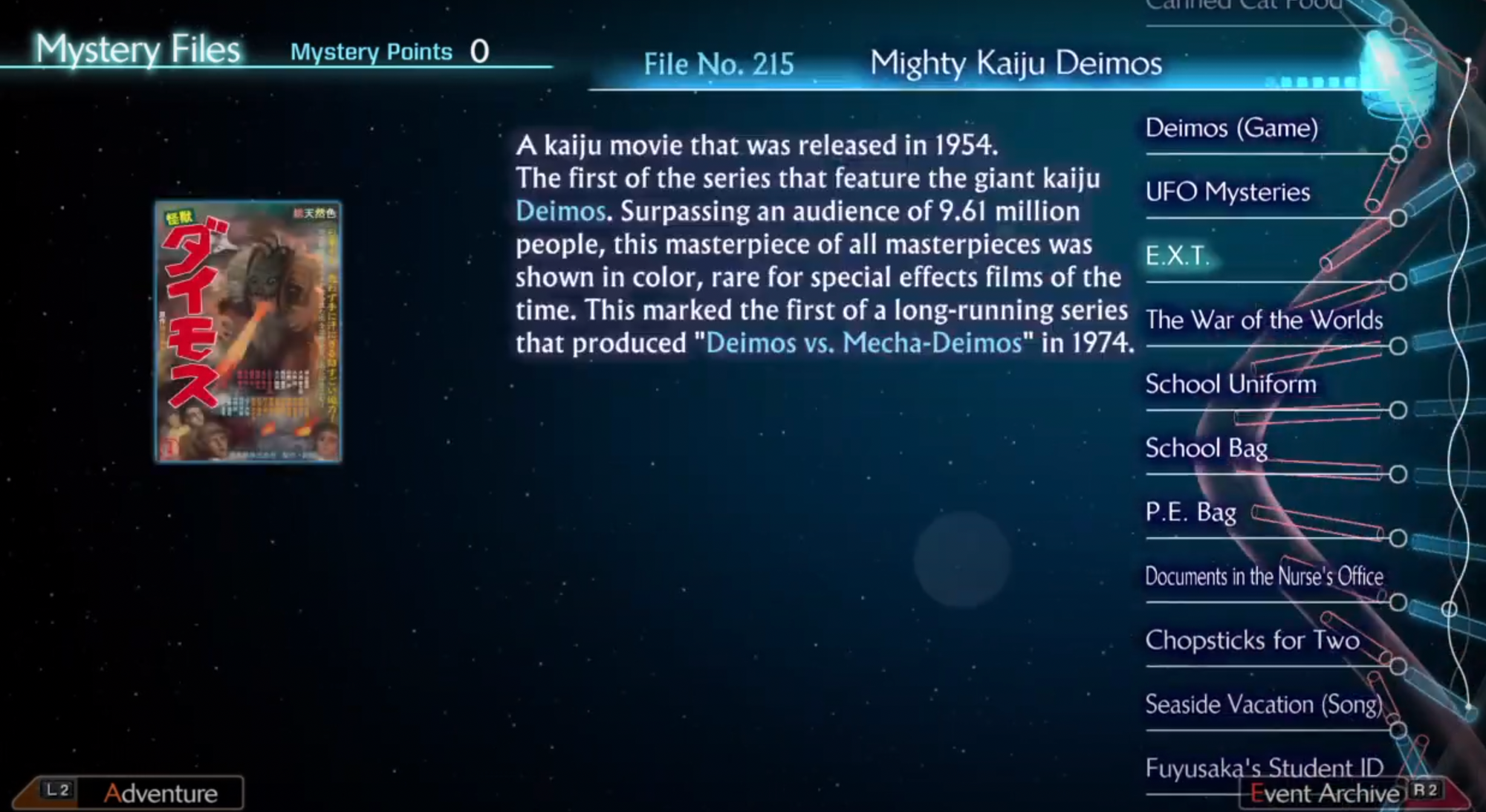
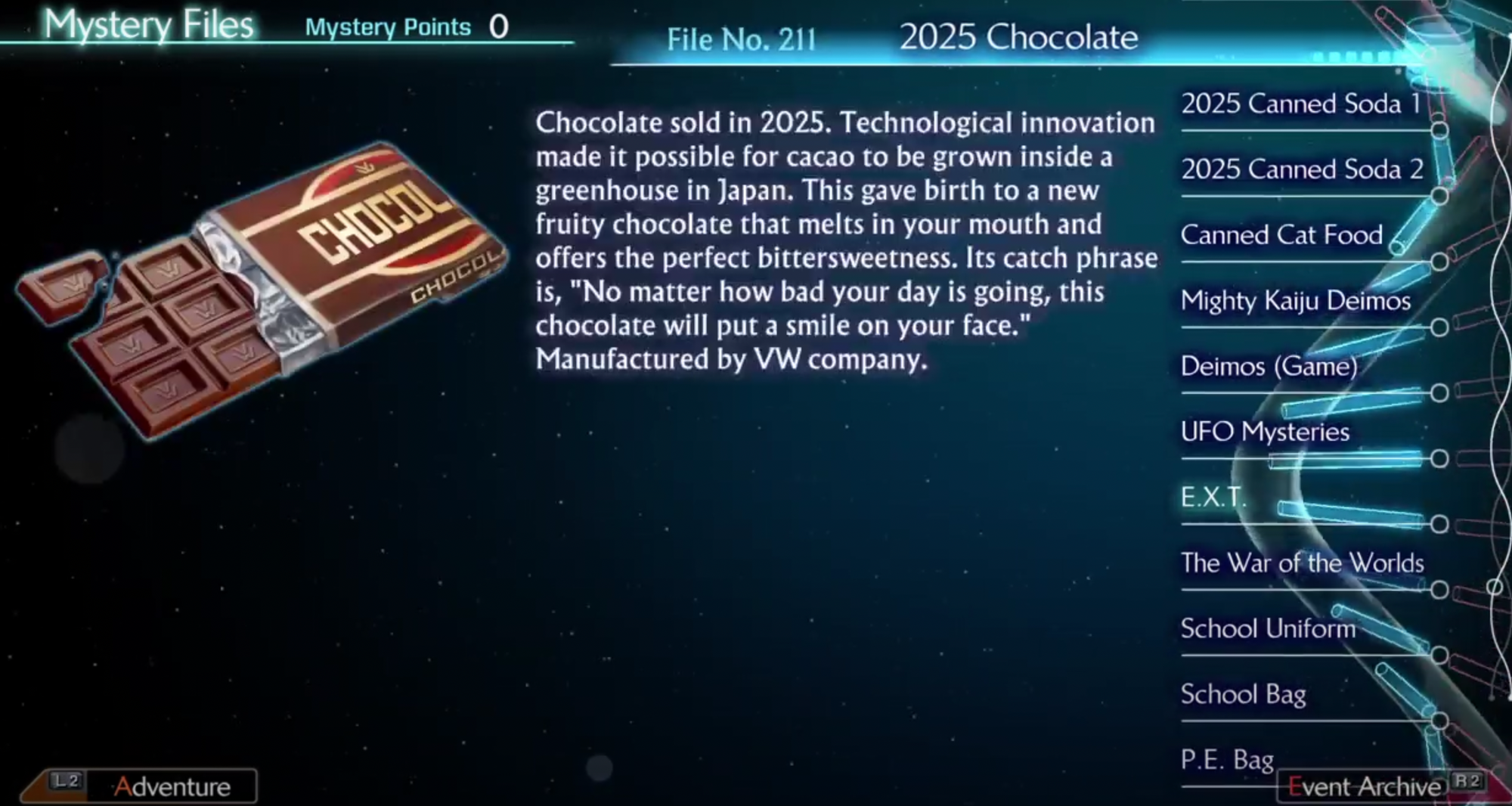
Analysis provides info on key terms that expands as more info is collected. Source: Author.
The Sci-Fi Film Influence
What stuck out to me was how the varying tones that existed in science fiction films within the 1970s and 1980s lived within the characters and their stories.
In the 1970s, many sci-fi films revealed a bleak future because of human mismanagement and warned of an overreliance on technology. In 13 Sentinels, Kamitani pulls upon numerous messages and concepts found within these films to craft the world and its plot.
To name a few, Soylent Green (1973) explores overpopulation and the lasting impact of climate change. Only the elite can afford actual food, and the rest of the world relies on distributed rations called Soylent (the masses are unaware that they actually made the new Soylent Green out of people). In Ridley Scott’s Alien (1979), we see technology work against the crew; the system running the ship prioritizes the goals of the corporation it serves versus the lives of the crew. The bluish color grading that gripped the original film even served as inspiration for the Sentinel cockpits.
Kamitani provides players snippets of a bleak ‘future’ through brief encounters with our thirteen protagonists as adults in the year 2188. It’s only brief conversations held through a commlink, with the backdrop of a massive spaceship, but it alludes to a timeline in which Earth is no longer inhabitable. Later on, it’s revealed that greed and technology unchecked led to humanity becoming threatened. Only a select few (to be frank, the privileged and those who know someone of high status) could escape and board a colony ship with the goal of continuing humanity on another planet.
In the game, VHS copies of sci-fi films even act as an actual medium of processing memories through visual metaphors, specifically for Juro. It’s not quite obvious until we view the stories in chronological order that the campy sci-fi films he’s been recalling to others are analogous to actual events experienced by, well, another version of himself. The film of an alien abandoning its broken-down UFO and finding refuge on Earth features a “famous scene where [the alien] teleports onto a bridge”. In reality, it was him… in a sense (I won’t wade too deeply into spoiler territory here).
If Juro embodies the bleakness and struggle of those films and tropes, Natsuno Minami represents the diversification of sci-fi films that emerged in the 1980s. Minami is an avid fan of the genre, even wading into conspiracies, and is pretty open regarding her belief in the existence of aliens. So when a little robot (nicknamed BJ) comes into Minami’s life, requiring help finding its way back to its Sentinel, all while avoiding the ‘men in black’, we’re plunged into a bona fide E.T. scenario.
While Minami will face her fair share of sci-fi horror, she brings in emotional intimacy within the science fiction genre. Many would have recoiled or approached the unknown with caution. Minami, however, greets it with wide-eyed wonder and curiosity.

We also see through her and other characters this differentiation between ‘good robots’ and ‘bad robots’ through physical appearance alone (another classic sci-fi trope).
BJ is compact, adorable, and looks like the cleaned-up version of WALL-E, while the game's androids are presented as enemies, viewed as nearly unkillable and from the future (a clear nod to The Terminator). They’re even given a poor reputation through Nenji Ogata’s childhood TV show, Kamen Hero Stranger (a reference to the 1970s TV show Kamen Rider), which featured “machine people” causing harm to humanity.
Influence on Enemies and Gameplay
The influences and references do not end there, trickling into the game's foes and gameplay. Deimos – robotic kaijus – can be properly faced in Destruction mode. Here character dialogue and bits of plot weave with real-time and pause combat.
The battlefield is Japan, and Vanillaware purposely made it feel like a classic arcade game (with better graphics, of course). In no way is this like Pacific Rim or the Godzilla films in which you battle it out with those nasty creatures and call it a day. There are no reprieves. Just like said arcade game, if you lose, you're sent back to the very start.
With the stakes at an all-time high, Basiscape stepped in to ensure music is front and center, each song perfectly tied to the enemies and aligning with the reality-meets-advanced-tech scene, and issues consuming the battlefield. Strings and thudding synth percussions cue up as you strategically move players across the grid, flickers and whispers of Brat Overflow living within each song, acting as an auditory motif of unyielding defiance.
Continuing that visual theme of bad versus good robots, the enemies are grotesque and terrifying, coated in cold steel and reds. Their designs take on numerous inspirations, the most notable being the Tripods from The War of the Worlds. A close rendition of them can be found in Hi-Quads, bearing the same spindly appendages and firing lasers as described in the book. Juro often references and reflects on the novel and the title is even the name of a pilot skill for Minami, her attack increasing significantly when a Hi-Quad is nearby.
Just like a game, the enemies evolve, growing in strength and numbers after each wave is cleared. This is where the diverse array of Sentinels comes in, just as imposing as their kaiju counterparts.
Kamitani shared in an interview that he strayed away from the stylish designs found in mecha anime, such as Neon Genesis and Mobile Suit Gundam. Instead, he found inspiration from the 1989 sci-fi film, Robot Jox. In the film, conflicts and disputes between countries play out through single combat via robots. The robots that square off are bulky and massive, a look Kamitani pursued in 13 Sentinels in order to contrast a world depicted “like a dainty shōjo manga to… accentuate the gap between the two aspects."
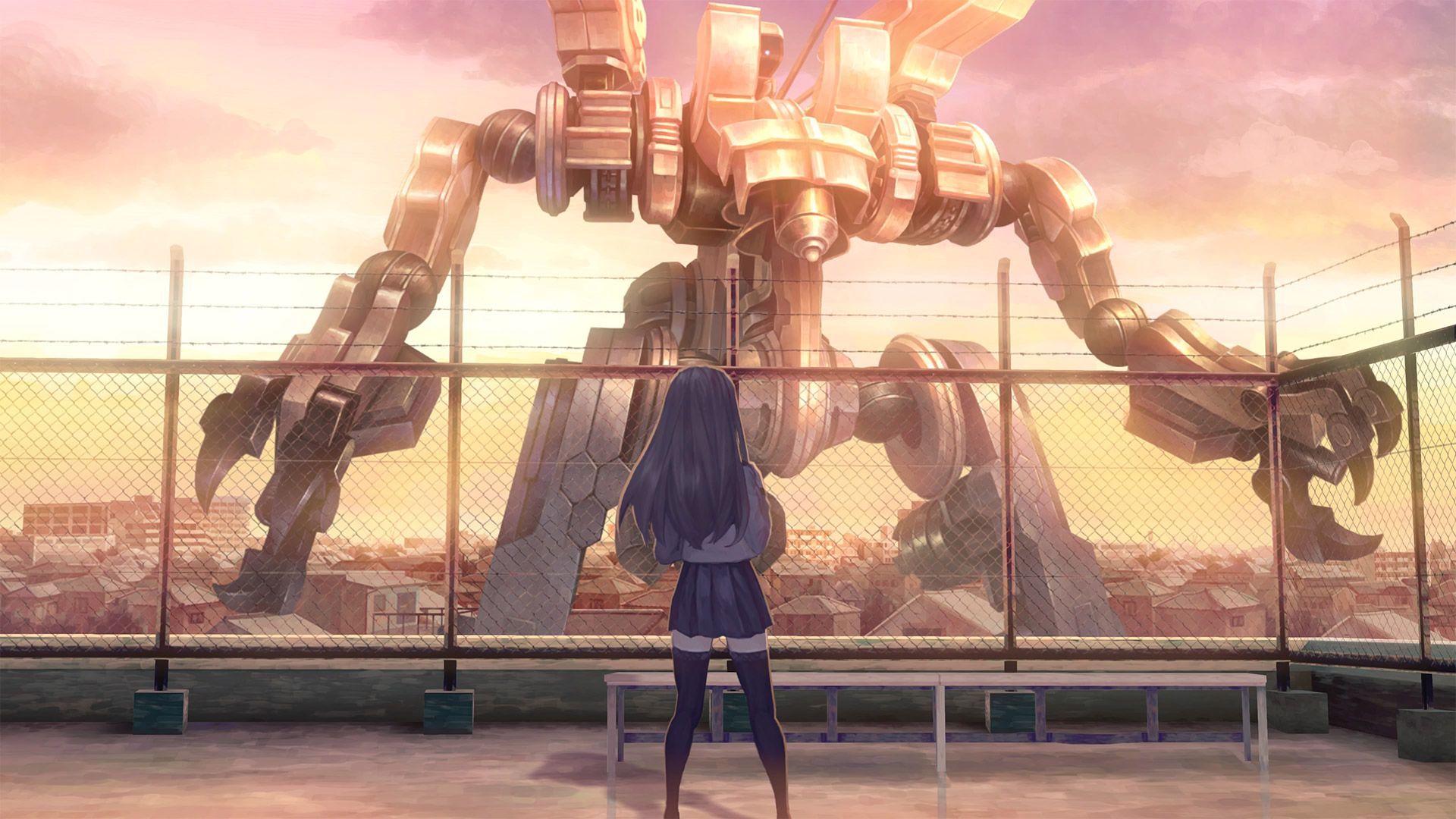
The rugged Sentinels, the exhilarating fight tracks, and the winks to different science fiction shows, films, and books within the pilot skills section make combat just as memorable as the plot.
For example, Juro’s The Only Neat Thing to Do pilot skill is a direct nod to Alice Sheldon’s short story, famous for writing a litany of science fiction stories under the pseudonym James Tiptree, Jr. that grappled with gender, identity, and youths’ hopes and dreams clashing with reality. It also is a cheat code for the Back to the Future Part II arcade game, allowing players to skip to the next level.
While the combat doesn't require too much strategy, there are moments when the field can become overwhelming. This makes watching petite characters like Iori Fuyusaka pulverizing her enemies with her hulking 2nd Generation Sentinel dangerously satisfying. The world and its characters lose their “dainty” appearance when it comes to maneuvering these colossal mechas in order to ensure their survival.
Final Thoughts
At first glance, 13 Sentinels offer a warning that if we, humans, continue to abuse technology, it can lead to destruction. However, this narrow interpretation is a mistake. The genuine question being explored is whether our protagonists’ predecessors — those who have developed and managed the technology — will give up their self-serving goals in order to ensure those after them thrive.
The game picks at those with great say and sway in the universe, players observing them choosing to prioritize themselves over the young cast members. It’s reminiscent of the apathetic “It’s not my problem. Leave it to the next generation to deal with” mindset found when discussing issues such as climate change. Genuine change only comes when those with the most power use their positions to aid the future generation. It’s a message that grips the final hours of the game.
13 Sentinels is a love letter to the science fiction genre, chock full of tropes and references to beloved classics in order to tell a riveting story of a group of teens saving the world with their giant robots. It skilfully dives deep into serious issues seen within the genre, balancing it with a charming cast who wishes for a chance to continue their story. You, as the player, have a role in making this possible. All you have to do is press START.
